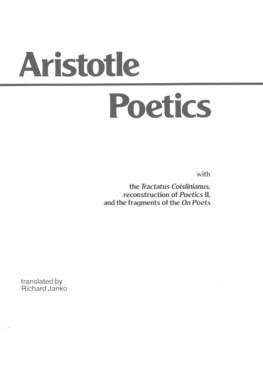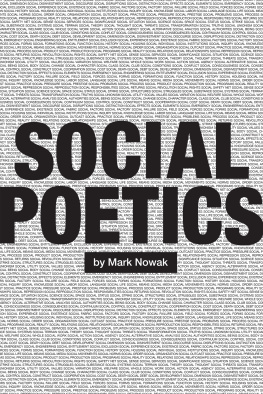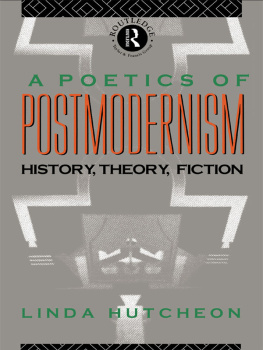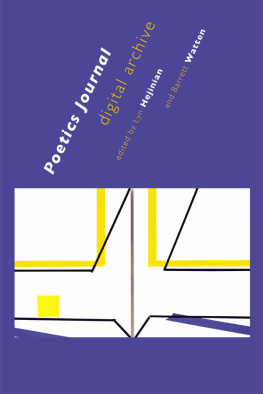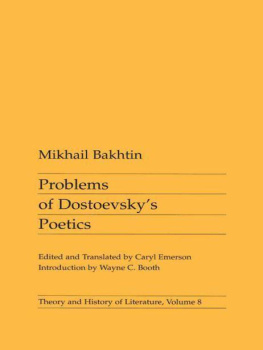Jongsoo Lee - The Allure of Nezahualcoyotl: Pre-Hispanic History, Religion, and Nahua Poetics
Here you can read online Jongsoo Lee - The Allure of Nezahualcoyotl: Pre-Hispanic History, Religion, and Nahua Poetics full text of the book (entire story) in english for free. Download pdf and epub, get meaning, cover and reviews about this ebook. year: 2008, publisher: University of New Mexico Press, genre: Art. Description of the work, (preface) as well as reviews are available. Best literature library LitArk.com created for fans of good reading and offers a wide selection of genres:
Romance novel
Science fiction
Adventure
Detective
Science
History
Home and family
Prose
Art
Politics
Computer
Non-fiction
Religion
Business
Children
Humor
Choose a favorite category and find really read worthwhile books. Enjoy immersion in the world of imagination, feel the emotions of the characters or learn something new for yourself, make an fascinating discovery.

- Book:The Allure of Nezahualcoyotl: Pre-Hispanic History, Religion, and Nahua Poetics
- Author:
- Publisher:University of New Mexico Press
- Genre:
- Year:2008
- Rating:3 / 5
- Favourites:Add to favourites
- Your mark:
- 60
- 1
- 2
- 3
- 4
- 5
The Allure of Nezahualcoyotl: Pre-Hispanic History, Religion, and Nahua Poetics: summary, description and annotation
We offer to read an annotation, description, summary or preface (depends on what the author of the book "The Allure of Nezahualcoyotl: Pre-Hispanic History, Religion, and Nahua Poetics" wrote himself). If you haven't found the necessary information about the book — write in the comments, we will try to find it.
Jongsoo Lee: author's other books
Who wrote The Allure of Nezahualcoyotl: Pre-Hispanic History, Religion, and Nahua Poetics? Find out the surname, the name of the author of the book and a list of all author's works by series.
The Allure of Nezahualcoyotl: Pre-Hispanic History, Religion, and Nahua Poetics — read online for free the complete book (whole text) full work
Below is the text of the book, divided by pages. System saving the place of the last page read, allows you to conveniently read the book "The Allure of Nezahualcoyotl: Pre-Hispanic History, Religion, and Nahua Poetics" online for free, without having to search again every time where you left off. Put a bookmark, and you can go to the page where you finished reading at any time.
Font size:
Interval:
Bookmark:
The Allure of Nezahualcoyotl

Map of central Mexico in the Aztec period.
NEZAHUALCOYOTL
Pre-Hispanic History,
Religion, and
Nahua Poetics
Jongsoo Lee

ISBN for this digital edition: 978-0-8263-4339-0
2008 by the University of New Mexico Press
All rights reserved. Published 2008
Printed in the United States of America
13 12 11 10 09 08 1 2 3 4 5 6
The Library of Congress has cataloged the printed edition as follows:
Lee, Jongsoo, 1964
The allure of Nezahualcoyotl : pre-Hispanic history, religion, and Nahua poetics / Jongsoo Lee.
p. cm.
Includes bibliographical references and index.
ISBN 978-0-8263-4337-6 (cloth : alk. paper)
1. Nezahualcyotl, King of Texcoco, 14021472. 2. AztecsKings and rulersBiography. 3. Texcoco de Mora (Mexico)Antiquities. 4. Nahuatl poetryHistory and criticism.
I. Title.
F1219.75.N49L44 2008
972.018dc22
2007048454
An earlier version of appeared as Westernization of Nahuatl Religion: Nezahualcoyotls Unknown God, Latin American Indian Literatures Journal 19, no. 1 (2003): 1948. Reproduced by permission. An earlier version of the epilogue appeared as The Colonial Legacy in Cardenals Poetry: Images of Quetzalcoatl, Nezahualcoyotl, and the Aztecs, Hispania 87, no. 1 (2004): 2231. 2004 The American Association of Teachers of Spanish and Portuguese, Inc. Reproduced by permission.
To Jiyoung and Gia

Several years ago I encountered beautiful, full-colored images on the wall in a hallway at Indiana University. At first, I thought they were Buddhist paintings of the type that I had been familiar with since I was a little boy, but later I discovered that they were actually excerpts from Aztec and Maya painted books. This incident sparked my curiosity and inspired me to pursue a research agenda focusing on the world of ancient Mexico. This book is the first major product of my research agenda.
There are numerous teachers and friends whom I wish to thank for their comments, suggestions, and encouragement during the process of writing this book. My deepest appreciation goes to Gordon Brotherston who introduced me to the painted books of Mesoamerica and who imparts his knowledge with great enthusiasm and generosity. I have been fortunate to get to know him as a teacher and person. I would like to give my special thanks to Joe Campbell who encouraged me to study Nahuatl and who taught me how to appreciate the language. His suggestions have been a tremendous help in the translations from Nahuatl that appear in this book. However, I am fully responsible for any errors. I thank my friends and colleagues for their support and encouragement. My sincere thanks go to Galen Brokaw who studied Nahuatl together with me and who has always challenged my ideas in productive ways. I appreciate him sharing his perspectives as a specialist in the colonial period and spending hours reading my manuscript. I also thank Jos Rabasa, Katherine Larson, Kate Myers, Karen and Robert Upchurch, and Eduardo de Douglas for their encouragement and friendship.
I am grateful for the Summer Junior Faculty Fellowships and Small Grants that the University of North Texas awarded me to work on this book. I am also grateful for the following institutions and publishers for allowing me to reproduce images: Museum of the American Indian Heye Foundation, Biblioteca Nacional de Antropologa e Historia, Bibliothque nationale de France, University of Utah Press, University of California Press, Jos Porra Turanzas, Fondo de Cultura Econmica, and El Colegio Mexiquense. Initial versions of some of the chapters have been published as articles, as noted on the copyright page, even though they are significantly altered. I wish to thank the editors and publishers of these journals for their permission to reprint my work. My deep appreciation goes to the anonymous reviewers who gave my manuscript such a meticulous reading. Their comments were invaluable. I also thank Luther Wilson and Lisa Pacheco at the University of New Mexico Press for their encouragement and patience.
Finally, I deeply appreciate my parents, who inspired me to be a teacher and gave me endless support from overseas. I also thank my wife, Jiyoung, and my daughter, Gia, who have always supported me with their patience and love. I dedicate this book to them.

Nezahualcoyotl, the poet-king of Texcoco (14021472), has been described as one of the most important pre-Hispanic figures in Nahua history. From the conquest to the present, he has been portrayed as a symbol of the Aztec civilization and culture in historical as well as literary texts: a great conqueror who built a powerful empire before the conquest; a prudent governor who established an efficient government and created a fair legal system; a patron of the arts who welcomed artists and poets in his city; a poet himself who composed philosophical songs; a sage-prophet who anticipated the destruction of the Aztec world and thus the arrival of the Spaniards; and a devoted religious king who rejected human sacrifice by intuiting an unknown, true god. By focusing on these images of Nezahualcoyotl, many chroniclers, historians, anthropologists, and literary critics have frequently presented him as a clear contrast to the Spanish images of the bloodthirsty Mexica who were mainly interested in conducting human sacrifice and conquering their neighbors. This study, however, argues that all these images of Nezahualcoyotl were invented by a European colonial ideology after the conquest. I demonstrate that Spanish friars who interpreted pre-Hispanic history from a Judeo-Christian perspective created this image of Nezahualcoyotl, and their chronicles have repeatedly served as reliable sources for most Nahua scholars who study this figure. Because of the diverse disciplines of the scholars who take up this topic, including anthropologists, historians, literary critics, philosophers, and those interested in religious studies, this distorted pre-Hispanic history and culture became popular and widely accepted in Nahua studies. By reexamining current images of Nezahualcoyotl, this project proposes to revise the version of pre-Hispanic Mexican history that Western scholarship has continuously reproduced for the last five centuries.
For the indigenous peoples, the conquest meant the brutal destruction of their world system under colonial exploitation, whereas for the Spanish colonizers, it meant the great inauguration of building a New World under Christianity. The Spaniards in the sixteenth century were fervent, religious men and considered the conquest of the Aztec empire as Gods providence. This somewhat simplified description of the indigenous world appeared later in more sophisticated and detailed form, and with broader topics, in the chronicles of friars such as Fray Andrs de Olmos, Fray Toribio de Benavente (better known by his Nahuatl name Motolinia), Fray Bartolom de Las Casas, Fray Diego Durn, and many others. The Spanish friars of the sixteenth century in New Spain actively engaged in examining and interpreting the indigenous world. They acquired a good command of native languages and were able to access indigenous sources such as oral traditions and pictorial scripts. The friar chroniclers provide richer and more reliable descriptions of Aztec society and thus are undoubtedly significant sources. They, however, selected, excluded, and even invented many aspects of pre-Hispanic indigenous society according to the ideological demands of their religious orders. The main purpose of friars writing about indigenous society was not to record the past as it was, but to find a better way to evangelize the natives. Fray Bernardino de Sahagn (1997a:17) explained that a doctor should know his patients well enough to cure them, by which he meant that the better the friars understood the indigenous people, the easier they would be able to eradicate indigenous idolatry and convert the natives to Christianity.
Next pageFont size:
Interval:
Bookmark:
Similar books «The Allure of Nezahualcoyotl: Pre-Hispanic History, Religion, and Nahua Poetics»
Look at similar books to The Allure of Nezahualcoyotl: Pre-Hispanic History, Religion, and Nahua Poetics. We have selected literature similar in name and meaning in the hope of providing readers with more options to find new, interesting, not yet read works.
Discussion, reviews of the book The Allure of Nezahualcoyotl: Pre-Hispanic History, Religion, and Nahua Poetics and just readers' own opinions. Leave your comments, write what you think about the work, its meaning or the main characters. Specify what exactly you liked and what you didn't like, and why you think so.


